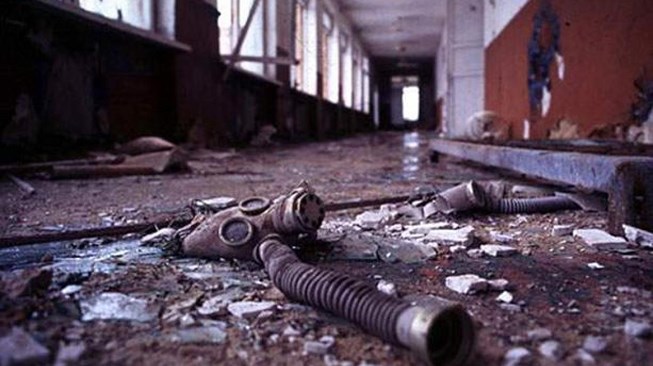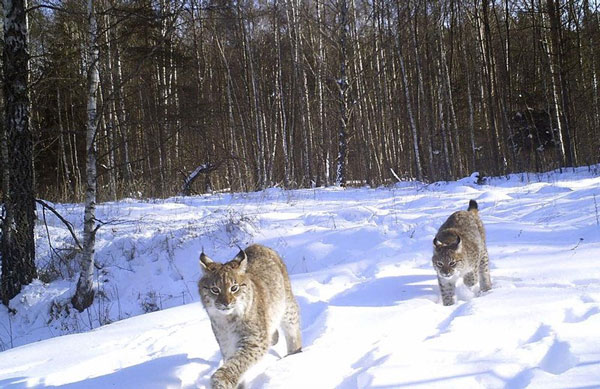New discovery of the Chernobyl nuclear disaster effect
This remarkable new finding contradicts official statistics about the 'Away area', where many species suffer from adverse radioactive effects during the accident, thus leading to the anomaly is not compatible with life.

Chernobyl nuclear disaster.Photo: TN.
Sputniknews reports that the devastating Chernobyl disaster occurred on April 26, 1986, by an explosion at the Fourth nuclear reactor of a power plant near the Pripyat river in Soviet Union Ukraine, which was beneficial. for the environment, according to a shocking UN report at the Chernobyl Forum.
The report is titled 'Chernobyl's Heritage: Health, Environment and Economic Impacts'.
The controversial positive effects are thought to be related to the restoration of the affected areas in the 'Area to be avoided' by 'eliminating human activities' there, like dots ending agricultural and industrial activities.
The report also points out the link between the termination of industrial activities and the population expansion of all plants and animals.
The area has become a haven for unprecedented biodiversity, despite the serious impact of the accident, according to a recent estimate, that has led to an additional 39,000 deaths. cancer deaths worldwide.
 The bobcat wanders near Chernobyl, where more than 30 years after the nuclear reactor caught fire and spewed a lethal radioactive cloud, some mammals have thrived due to unaffected by people in the area.Photo: AP.
The bobcat wanders near Chernobyl, where more than 30 years after the nuclear reactor caught fire and spewed a lethal radioactive cloud, some mammals have thrived due to unaffected by people in the area.Photo: AP.
Plants and animals within 20-30 km of the reactor were subjected to a high dose of radiation, leading to death and anomalies. However, in recent years, adverse effects have been reduced, along with many species of organisms becoming more developed under new conditions.
 Wild horses are also a well-developed species in this area.Photo: AP.
Wild horses are also a well-developed species in this area.Photo: AP.
Finally, the disaster also caused many people to change their attitudes towards nuclear energy and nuclear safety. For example, Italy launched a project to eliminate nuclear energy in the country at that time, although the project was neglected in 2008, while the 2011 referendum showed that people expected want the government to continue these efforts.
At the same time, the explosion prompted Germany to establish the Federal Ministry of Environment, along with the explosion of anti-nuclear movement. Finally the use of nuclear power ended under Gerhard Schroder.
April 26 marks 33 years since the Chernobyl disaster occurred in northern Ukraine, at the height of the Cold War, when the world was horrified by the prospect of nuclear apocalypse.
Residents in isolated areas became victims of radioactive poisoning, ranging from 4,000 to 200,000, with more than 100,000 people evacuated.
The accident occurred during a safety inspection late at night, looking like a normal blackout, but both emergency control and electrical control systems were mastered off. destination.
- Photos of 30 years of disaster Chernobyl nuclear power plant
- Wild animals proliferate where ever a nuclear disaster occurred
- Nuclear disaster can happen at any time
- Europe at risk of radiation radiation
- Ukraine celebrates the 25th anniversary of the Chernobyl disaster
- The ghost town near Chernobyl
- Large fires near Chernobyl nuclear plant
- Chernobyl is a human disaster, but good news for animals here
- Controversy about life at Chernobyl
- Japan and Ukraine cooperate to monitor satellites of nuclear disaster areas
- Philippines' unfinished nuclear dream
- Why did the Chernobyl atomic disaster not kill all plant species?
 'Fine laughs' - Scary and painful torture in ancient times
'Fine laughs' - Scary and painful torture in ancient times The sequence of numbers 142857 of the Egyptian pyramids is known as the strangest number in the world - Why?
The sequence of numbers 142857 of the Egyptian pyramids is known as the strangest number in the world - Why? History of the iron
History of the iron What is alum?
What is alum?